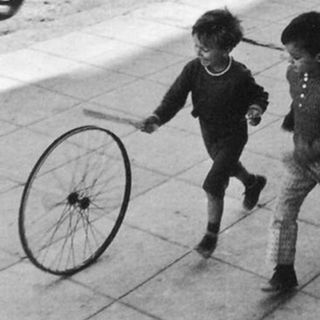
Stop Sharing the Video of a Mumbai Teen Jumping to Her Death
News outlets and individuals have been testing the limits of decency.

Two days ago, a 14-year-old Mumbai girl allegedly jumped to her death from the eighth floor of the housing complex she lived in with her parents. The entire incident — her brief moment of hesitation as she sat on the parapet, the moment she made up her mind, and when she finally flung herself off the ledge — was recorded by a 21-year-old young man who lived in the building opposite hers.
Many news reports about the tragic incident carry either stills from the video, or slow-motion clips of the girl falling to her death, or both, often with big, red circles around her falling body to draw and retain the viewer’s attention to the horrific events unfolding on screen. For every news outlet that has had the decency not to turn a young girl’s death and her family’s agony into a voyeuristic circus, there are ten who have exhibited no such scruples.
A big, distressing, delicate, often confounding part of journalism is to define, and then redefine, the difference between what constitutes salaciousness for the sake of eyeballs and true public interest. The lines can often get blurry. Does it help an electorate make more informed choices when they know that their morality-touting representative is boning young women his daughter’s age on the side, or is it a moot point because it has nothing to do with his ability to do the job? In this situation, however, it’s clear-cut: It is difficult to imagine what could possibly serve the public interest by watching a child die, over and over, framed by the flashiest possible tricks to grab attention.
The public themselves, despite horrified exclamations and endless posturing over the futility of suicide, remains unmoved. The very same video has been making the rounds of WhatsApp and social media, too, shared incessantly by people who need something to tut-tut about over drinks with their friends that evening.
(And thanks to the wildfire nature of social media and instant messaging, the disturbing video has found its way — multiple times — into the inboxes of the bewildered family of the deceased child in it. Imagine what the inconsolable parents must feel every time they’re forced to relive the most horrifying moment of their lives.)
It isn’t grief, or the need to vent it, that turns people into unthinking spectators, but a craven hunger for entertainment.
Grief has always had an important social function and holds immense conversational currency. Sharing the experience of grief after a loved one’s death can be cathartic — allowing the bereaved to cope, make sense of what transpired, or, at the very least, not remain trapped in an echo chamber of their own confused thoughts. It is the reason almost every culture in the world has unifying rituals to help people mourn a death. Wakes, funerals, burials, cremations, pujas all provide people an outlet for their grief. But at the centre of this premise lies the belief that the people around them will, and do, act in good faith. This confidence in people’s empathy is what enables people to share their sorrow and allow themselves to be vulnerable.
But when death is treated like a sport, and voyeurism becomes par for the course, we decimate the idea that people are innately decent, capable of compassion. We now live in a time when, in the moment one lands on the sickening realisation that a child is about to kill herself, one’s reaction is to whip out the phone and fire the camera, instead of panicking and doing everything humanly possible to avoid a lost life. This must be the ‘natural’ progression from a few months ago, when India lost Sridevi due to accidental drowning in a bathtub. Even as her shocked family grappled with coming to terms with her sudden death, the media frenzy around it and outpouring of disbelief from fans resulted in conspiracy theories about her ‘murder’ mushrooming in all corners of the Internet. Even before autopsy reports were released, social media and the public had settled on and tried an assumed culprit. Everything — from her husband, to her lifestyle choices, to her cosmetic surgery — was tried in the court of public scrutiny.
It’s hard to imagine that dissecting imaginary causes for Sridevi’s death could have brought any solace to her saddened fans, any more than watching replays of a teenager committing suicide could give viewers any intelligent insight into what compels a person to give up on life altogether. It isn’t grief, or the need to vent it, that turns people into unthinking spectators, but a craven hunger for entertainment. So, let’s admit that we live in a world where even death is an acceptable form of entertainment, and having something to talk about is more important than appealing to people’s humanity.
Since we’re apparently so into deaths, here’s a sobering reminder of another one, almost 25 years ago.
In 1994, Pulitzer Prize-winning photojournalist Kevin Carter committed suicide four months after he won the esteemed award for his sensational photograph of a starving Sudanese boy (who was initially thought to be a girl) being stalked by a vulture waiting for his death, as the boy collapses on his way to a United Nations aid centre. His picture helped humanitarian organisations raise funds to battle the extreme famine-situation in Sudan. That is using the camera in public interest. That is the result of shared empathy. That is the result of grief, perhaps felt most acutely by Carter, who later killed himself. It is believed that he could not live with the traumatising memory of what he had witnessed.
But no one is a Carter here. What these suicide-recording and forwarding excuses for human beings are doing is what the vulture was doing to the little boy — waiting impatiently for him to die.
Sonali Kokra is a writer from Mumbai. She writes primarily on women's issues, relationships, culture, and lifestyle. In addition to writing, for the past 10 years, she has been attempting to make round chapattis at her mother's insistence. Currently, she is weirdly obsessed with smocks with pockets.
Related


What You Should Expect Your Kid To Learn In Preschool
